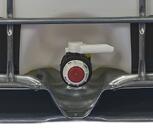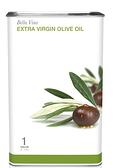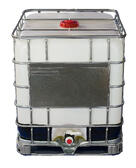 The spout that olive oil pours out of at the bottom of a tote. This spigot may be a separate attachment piece, as is used with the Bag-in-Box tote, or may be built-in, like in the hard plastic totes. Also, sometimes referred to as a valve.
The spout that olive oil pours out of at the bottom of a tote. This spigot may be a separate attachment piece, as is used with the Bag-in-Box tote, or may be built-in, like in the hard plastic totes. Also, sometimes referred to as a valve.
 The spout that olive oil pours out of at the bottom of a tote. This spigot may be a separate attachment piece, as is used with the Bag-in-Box tote, or may be built-in, like in the hard plastic totes. Also, sometimes referred to as a valve.
The spout that olive oil pours out of at the bottom of a tote. This spigot may be a separate attachment piece, as is used with the Bag-in-Box tote, or may be built-in, like in the hard plastic totes. Also, sometimes referred to as a valve.
Place stained cloth on flat surface or towel. Cover stain with thick layer of cornstarch, salt or baking soda. Allow to sit until dry ingredient begins to cake. Scrape off with table knife and discard dry ingredient, which will have absorbed most of oil. Launder as usual, in hottest water recommended for fabric.
The ideal environment and packaging to store your product in, to preserve the shelf life for as long as possible. Olive oil prefers to be stored in a cool, dry location away from sunlight, heat and air.
A special truck that holds about 45,000 lbs of liquid material commonly used for domestic shipments. Tankers have a built in pump to get the oil out, versus the flexitanks which are simply a container that must be pumped out of using a special attachment. These tankers save a lot of money over the totes and drums by removing packaging and domestic LTL shipping costs.
A specific taste associated with olive oil. The majority of olive oil taste comes from which grade it is and what olive varietal(s) it is composed of. Of course, the taste changes based on the crop, the weather, the land it was harvested from, as well as the age of the oil. A supplier can usually match a specific olive oil taste profile when a sample is provided by the customer.
 An olive oil container made of a thin metal material. It is typically in a rectangular cube shape with a hole at the top used to pour the oil out. This packaging comes in either a 3 liter or 1 gallon size.
An olive oil container made of a thin metal material. It is typically in a rectangular cube shape with a hole at the top used to pour the oil out. This packaging comes in either a 3 liter or 1 gallon size.
 A tote is a common industrial packaging size that resembles a large box. Totes come in a variety of sizes including 264, 275 and 330 gallon. They also can be made from a variety of materials; the common types are a hard plastic with an aluminum frame, recyclable Bag-in-Box, and a collapsable plastic tote with an inner bag. These totes have a spigot at the bottom used to get the oil out, and may also have a bung hole on the top.
A tote is a common industrial packaging size that resembles a large box. Totes come in a variety of sizes including 264, 275 and 330 gallon. They also can be made from a variety of materials; the common types are a hard plastic with an aluminum frame, recyclable Bag-in-Box, and a collapsable plastic tote with an inner bag. These totes have a spigot at the bottom used to get the oil out, and may also have a bung hole on the top.
The average olive tree produces enough fruit to make three quarts of oil, although some trees produce three times as much.